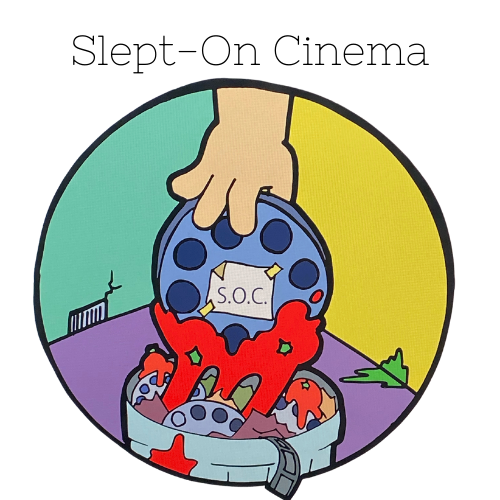Unveiling the Enigma: Episode 10's In-Depth Look at Snake Eyes"
Hello, cinephiles! Welcome back to another episode of Slept-On Cinema, where we delve into the overlooked and underrated gems of the film world. This time, we're setting our sights on Brian De Palma's 1998 thriller, Snake Eyes. A film that, while not initially embraced by all, has woven its way through the fabric of cult movie fandom with its unique style and intriguing narrative.
"Snake Eyes" stars Nicolas Cage as Rick Santoro, a flamboyant Atlantic City police detective who finds himself embroiled in a conspiracy during a high-profile boxing match. The film kicks off with an elaborate 20-minute tracking shot, a signature De Palma move, which sets the stage for a night of mystery and deceit. As the layers peel back, Santoro's journey dives into the murky depths of corruption, betrayal, and the elusive quest for redemption.
In Episode 10, we took a deep dive into what makes Snake Eyes a standout in both De Palma's filmography and the thriller genre. We examined the film's narrative structure, particularly how its real-time storytelling and frequent perspective shifts create a captivating puzzle for the audience. The film's commitment to showing the same event from multiple viewpoints not only heightens the suspense but also cleverly depicts the subjective nature of truth.
Nicolas Cage's performance was another focal point of our discussion. Known for his intense and sometimes over-the-top characters, Cage's portrayal of Santoro is both charismatic and complex. We debated the layers of his performance, how he embodies a man caught between the dazzle of corruption and a desperate grasp for morality.
The visual flair of Snake Eyes is unmistakable. De Palma's use of continuous takes, split screens, and innovative camera movements are in full display, creating a visceral experience that's both disorienting and mesmerizing. We appreciated the film's cinematography, discussing how it not only serves the story's tension but also elevates the film's overall aesthetic.
Despite its initial mixed reception, we explored how Snake Eyes has garnered a more appreciative audience over the years. Its critique of spectacle society, the nature of heroism, and the fallibility of perception are themes that resonate more as time passes. The film's ability to blend spectacle with a probing narrative invites viewers to look beyond the surface.
As always, we wrapped up the episode with our "Slept-On Segments" where we touch on the film's direction, performances, storytelling, and its lasting impact. Whether you're a De Palma aficionado, a Nicolas Cage enthusiast, or just a lover of 90s thrillers, Snake Eyes is a film that deserves a closer look for its ambitious storytelling and stylistic boldness.
So, if you're ready for a cinematic experience that's as unpredictable as it is compelling, join us in revisiting Snake Eyes. And remember, in the world of Slept-On Cinema, no film is too obscure or forgotten to be celebrated. Keep tuning in for more explorations into the lesser-seen corners of the movie universe!

